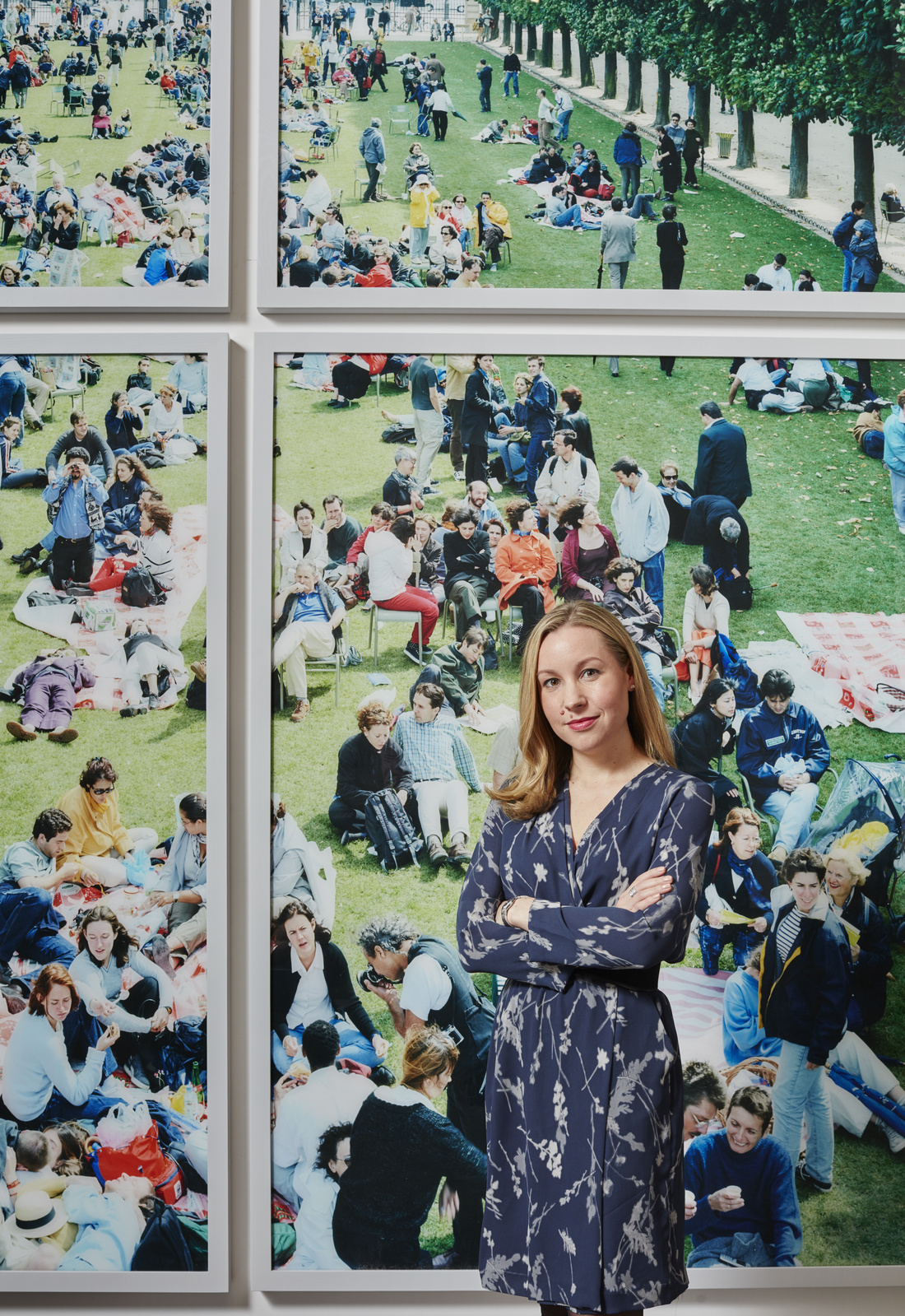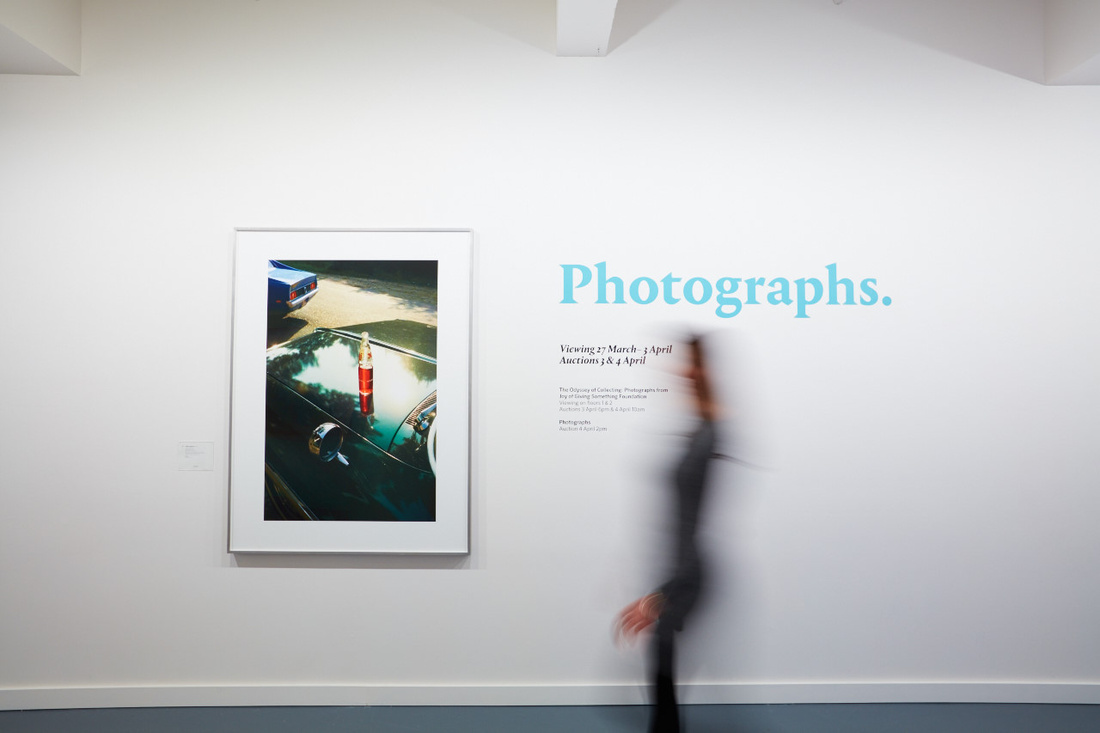Photographs to Buy at Auction this Week: Phillips Specialists on Highlights and Trends
On the heels of the 37th edition of The Photography Show presented by AIPAD, and kicking off the auction season for fine art photography, Phillips New York presents a duo of sales that explore the diversity of the medium. We spoke to specialists Sarah Krueger and Caroline Deck about highlights and trends for established photographs collectors and newcomers alike.
Photographs (April 4), Sarah Krueger
 Sarah Krueger, Specialist, Head of Sale (Photographs)
Sarah Krueger, Specialist, Head of Sale (Photographs)
Q: Sarah, can you start off by highlighting some of your favorite pieces in the Photographs sale?
Sarah Krueger: It’s so difficult to choose! We have a great portfolio of 11 prints by Richard Avedon, which were assembled in 1978 to coincide with The Met retrospective, Avedon/Paris, a celebration of his early career in fashion photography. All the photos in this lot were taken between 1947 and 1957 and are some of his top early fashion images. These images were captured at the start of an incredible journey, which would lead to him becoming one of the most iconic photographers of the twentieth century.
SK (cont.): Another favorite is Robert Mapplethorpe’s Tulips. This diptych is particularly exciting, because it was taken during an important point in Mapplethorpe’s life, when he was making connections that would come to define his career. It was in the 1970s when he would become close with collectors like Sam Wagstaff and Paul F. Walter, who, in fact, commissioned this work. Tulips has become has become quite emblematic of Mapplethorpe’s oeuvre as one of the prints was selected for the front cover of his Y Portfolio, both were selected for the front and back cover of A Book of Photographs from the Collection of Sam Wagstaff, and this particular work was included in Mapplethorpe’s first U.S. museum retrospective.
Q: Massimo Vitali’s Picnic Allée is the largest work by this artist to come to auction. How does it fit into his oeuvre? And, given its size, what kind of interior space might you recommend it for among potential collectors?
SK: We’re thrilled to offer Vitali’s Picnic Allée in the sale. He’s kind of the ultimate “people-watcher” and the large-scale of this print really does the work justice. At over 12 feet high and 15 feet wide, I could definitely see this piece fitting in really well within a corporate space, a lobby, or even a large wall in someone’s home for which they’d otherwise have trouble finding a suitable piece. I’m a bit envious of the person who will have the chance to look at this work every day. There’s an incredible amount of detail and every time you walk by it, you’re guaranteed to notice something new. We’ve loved having it in our galleries!
Q: For a collector who is new to fine art photography, which iconic photographers of the twentieth century would you call attention to within the sale?
SK: We have some great blue-chip names in the sale, between photographers like Robert Mapplethorpe, Richard Avedon, Irving Penn, and Berenice Abbott, among others; but I think I’d be inclined to point our selection of works by Henri Cartier-Bresson to someone who’s just beginning to learn about fine art photography. We have five lots by him in the sale, ranging from the late 1930s through the 1950s, and there’s something so charming about the way he captures fleeting moments among the ordinary happenings of daily life. For someone who leans toward a more minimalist aesthetic, we have a nice selection of prints by Lewis Baltz and one Robert Adams from the 1960s-1970s that I would recommend checking out. And for someone looking for more contemporary pieces, I’d point out Alec Soth’s Falls 26, from the artist’s Niagara series.
Q: Who are some more emerging artists represented in the sale who are beginning to gain traction internationally?
SK: Awol Erikzu’s striking Girl with a Bamboo Earring is the first work of his to ever be offered at auction. He’s been gaining an international audience over the past few years within collecting circles, but his fame recently skyrocketed after photographing Beyoncé earlier this year for her pregnancy announcement. Girl with a Bamboo Earring clearly echoes Johannes Vermeer’s famed Girl with a Pearl Earring, but, like the other works in his oeuvre, this photo serves to address the absence of people of color in the history of Western art. Marrying popular culture and fine art, Erizku understands that for beauty to be recognized in a museum, it must first be recognized in culture at large. People have really been responding to this work at our exhibition, and we’re excited to follow Erikzu’s career trajectory in the years to come.
Q: What broader trends are you seeing among photography collectors at this time? Are there themes from this weekend’s AIPAD show in New York that carry over to Phillips’ auction?
SK: Across the board, the market for photographs is quite strong. I think that as earlier images are becoming increasingly rare, we’re seeing an increased demand for high quality early pieces, so we’re really pleased with the breadth of selection in our Photographs auction and The Odyssey of Collecting, our sale dedicated to works from Joy of Giving Something Foundation. We’re also seeing a new enthusiasm from seasoned fine art collectors who have never previously purchased works of photography. Collectors seem to be interested, now more than ever, in how collecting across categories will enhance their collection. Contemporary paintings juxtaposed with photographs and twentieth century design can often create more dynamic and substantive groupings. We’re always delighted to educate people who are new to the category and see what piques their interest.
The Odyssey of Collecting (April 3-4), Caroline Deck
 Caroline Deck, Senior Specialist, Head of Sale (The Odyssey of Collecting)
Caroline Deck, Senior Specialist, Head of Sale (The Odyssey of Collecting)
Q: Would you consider Howard Stein ahead of his time in his attraction to collectible photography, beginning in the 1980s?
Caroline Deck: I think he certainly was in terms of the extent to which he was collecting photographs at such an early time. What was also so remarkable was his willingness to look outside the canon and collect photographers who were lesser-known. He seemed to be most driven by the images themselves and not necessarily the photographers, which really helped broaden and enrich the collection.
Q: Since ‘Odyssey’ spans such an extensive time frame, how many different types of photography does it feature and is there a specific genre that is most represented through these varying processes?
CD: The sale covers 166 years of photography so there are print types that represent the full spectrum from daguerreotypes to albumen and salt prints to platinum and gelatin prints to chromogenic and dye transfer prints. Mr. Stein certainly had an appreciation for landscape imagery which is captured in an array of processes by Gustave Le Gray, Carleton Watkins, Eugène Cuvelier, Edward Weston, Laura Gilpin, and Thomas Struth. One of my favorite parallels is looking at the Struth next to the print by Benjamin Brecknell Turner — taken 130 years apart but possessing so many aesthetic similarities.
Q: Tell us about the oldest piece in the collection and what makes it so important?
CD: The oldest piece that we are offering is William Henry Fox Talbot’s Eve. If you look at the catalogue, you may think we forgot to reproduce it, but it really is this beautifully soft photograph of a statuette of Eve at a fountain. Taken just one year after photography was invented, the fact that it remains at all is incredible. Nineteenth century photographers like Talbot were not just photographers but also scientists grappling with the chemistry of how to capture an image on paper and then fix it so that it remained. Eve really does represent the very beginnings of photography, so to see it within the context of a collection that includes work from the twenty-first century is really special.
Q: How would you say Mr. Stein’s curatorial aesthetic translates from the older works to the contemporary pieces by the likes of Idris Khan and Marco Breuer?
CD: Mr. Stein had an amazing eye as well as two wonderful advisors who helped him navigate works from the nineteenth, twentieth, and twenty-first centuries. I think one consistency we see is his interest in photographers who are using the medium in new and exciting ways. Whether that was a nineteenth century photographer like Charles Marville who mastered the complex subject of cityscapes with moving clouds to twenty-first century photographers like Khan and Breuer who abandon the camera altogether but still use the materials of the medium to create these photographic works of art.
Explore Phillips: Photographs and Phillips: The Odyssey of Collecting on Artsy, and place max bids on nearly 350 artworks. Live bidding opens for The Odyssey of Collecting on April 3rd, at 6:00pm ET, and continues on April 4th, at 10:00am ET. Bidding continues for Photographs on April 4th at 2:00pm ET.














No comments:
Post a Comment